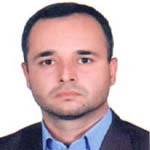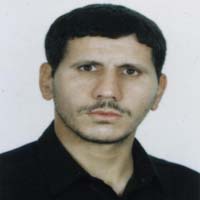A fuzzy-statistical segmentation of Sentinel 2 satellite images to determine the mineral pollution of coal in Damghan
[1] Corresponding Author Human activities, such as mining, constructing highways, and building infrastructures like dams and industrial facilities, have caused significant damage to many natural ecosystems. In addition to disrupting the balance of these ecosystems, some of these activities have led to considerable pollution. Traditional methods, such as geostatistics and geophysics, while helpful info helpful in identifying contaminated areas and measuring the extent of pollution, are often costly, time-consuming, and come with helpful in identifying areas and measuring the extent of pollution, are often expensive, time-consuming and come with various limitations. To address these limitations, remote sensing data can provide an effective solution. The foundation of remote sensing lies in the spectral frequencies or images captured through satellite or drone equipment. Remote sensing data processing methods for identifying the type and estimating the extent of soil contamination fall into three main categories: physical models, mathematical models, and physics-based mathematical models. Given the various challenges associated with remote sensing of pollution in mining areas and their surroundings and the limited research conducted—particularly in Iran—this study addresses a critical important important important necessary conducted undertaken—particularly in Iran—this study addresses the essential gap. Iran hosts numerous mining sites in or near critical environmental ecosystems, making pollution management in these areas a pressing issue. This research proposes a method combining fuzzy clustering and edge-based features to identify surface and physical soil contamination caused by mining activities and coal-washing waste from the eastern Alborz coal preparation plant. This approach uses Sentinel-2 satellite imagery at a 1:100,000 scale for the studied mining area. The study focuses on the eastern Alborz coal mining region in Semnan Province, Iran. This area lies 140 kilometers from the provincial capital, 25 kilometers northeast of Damghan, and 75 kilometers from Shahroud.
-
The utilization of Convolutional Neural Network for the analysis of Spectral Induced Polarization data through inversion techniques
Parnian Javadi Sharif, *, Behzad Tokhmechi, Fereydoun Sharifi
Journal of Mining and Environement, Spring 2025 -
Comparison of Edge Detection Algorithms for Automatic Identification of Fractures in Hydrocarbon Reservoirs with Image Logs
Mina Shafiabadi, *
Journal of Mining and Environement, Spring 2025 -
3D modeling of ore grade with an approximate Bayesian approach
Ahmadreza Boskabadi, Alireza Arab-Amiri *, Behzad Tokhmechi, Hossein Baghishani
Geosciences Scientific Quarterly Journal, -
Development of Drone-Borne Geophysical Surveys for Mineral Exploration
Reza Moezzi Nasab *, Abolghasem Kamkar-Rouhani, Alireza Arab-Amiri
Journal of Environment and Sustainable Mining, Winter 2024



